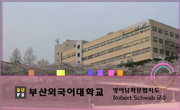In this paper, the learning situation of Korean Japanese learners of the middle and high levels who have studied Japanese complex case particles was investigated for the Japanese complex case particles having multiple forms such as 「nituite/ nitaisi...
http://chineseinput.net/에서 pinyin(병음)방식으로 중국어를 변환할 수 있습니다.
변환된 중국어를 복사하여 사용하시면 됩니다.
- 中文 을 입력하시려면 zhongwen을 입력하시고 space를누르시면됩니다.
- 北京 을 입력하시려면 beijing을 입력하시고 space를 누르시면 됩니다.
https://www.riss.kr/link?id=A103735487
-
저자
정혜지 (경북대학교)
- 발행기관
- 학술지명
- 권호사항
-
발행연도
2015
-
작성언어
Korean
-
주제어
Complex case ; Acquisition ; Wrong Use ; Tukaiwake ; 複合格助詞 ; 習得 ; 誤用 ; 使い分け
-
KDC
830
-
등재정보
KCI등재
-
자료형태
학술저널
- 발행기관 URL
-
수록면
199-216(18쪽)
-
KCI 피인용횟수
0
- DOI식별코드
- 제공처
-
0
상세조회 -
0
다운로드
부가정보
다국어 초록 (Multilingual Abstract)
In this paper, the learning situation of Korean Japanese learners of the middle and high levels who have studied Japanese complex case particles was investigated for the Japanese complex case particles having multiple forms such as 「nituite/ nitaisite」(=ey tayhayse in Korean), 「nitotte/nioite/niatte」(ey issese in Korean), 「nisotte/nisitagatte」(ey taraseo in Korean), and 「nikakete/niwatatte」(ey geolchoeseo in Korean). Based on the results of this investigation, effective guidance methods using the differences among these complex case particles and their proper usage were examined. The findings of this study are outlined below. First, the average percentage of correct answers for complex case particles was 60.3% which indicates that the learning of complex case particles is not easy. Next, the complex case particles that received the highest average percentages of correct answers were 「nituite/nitaisite」, followed by 「nikakete/niwatatte」, 「nisotte/nisitagatte」, and 「nitotte/nioite/niatte」. The highest percentage of correct answers for 「nituite/nitaisite」 was 86.7% and the lowest for 「nitotte/nioite/niatte」 was 48.2%. Thus, learning of the complex case particles 「nitotte/nioite/niatte」was much more difficult. Furthermore, the correlation between the percentages of correct answers and the learners’ levels for each example sentence of complex case particle was examined. For example sentences that showed a higher percentage of correct answers, higher levels were associated with higher percentages of correct answers, but some example sentences that showed lower percentages of correct answers showed no correlation with the learners’ levels.
목차 (Table of Contents)
- 1. 머리말
- 2. 선행연구의 검토 및 문제의 제기
- 3. 조사 개요
- 4. 조사 결과와 고찰
- 4.1.앙케트 조사 결과
- 1. 머리말
- 2. 선행연구의 검토 및 문제의 제기
- 3. 조사 개요
- 4. 조사 결과와 고찰
- 4.1.앙케트 조사 결과
- 4.2. 고찰
- 4.2.1. について, に対して
- 4.2.2. にとって, において, にあって
- 4.2.3. にかけて, にわたって
- 4.2.4. に沿って, にしたがって
- 4.3. 복합격조사의 지도 방안
- 4.3.1. について, に対して
- 4.3.2. にとって, において, にあって
- 4.3.3. にかけて, にわたって
- 4.3.4. に沿って, にしたがって
- 5. 맺음말
- 【참고문헌】
-
- <要旨>
참고문헌 (Reference)
1 정혜지, "한국인 일본어 학습자에 대한 복합격조사의 지도방안에 관한 연구 -「について」「に対して」「にとって」를 중심으로-" 한국일본언어문화학회 (24) : 227-245, 2013
2 杉本武, "複合格助詞 にとって」について" 筑波大学 44 : 80-, 2003
3 松木正恵, "複合助詞の特性" 54-56, 1995
4 砂川有里子, "複合助詞について" 日本語教育学会 (62) : 42-55, 1987
5 "現代語複合辭用例集" 國立國語硏究所 2001
6 森田良行他, "日本語表現文型ー用例中心․複合辞の意味と用法ー" アルク 8-9, 1989
7 庵功雄, "日本語文法ハンドブック" スリーエーネットワーク 2001
8 益岡隆志, "日本語文法セルフ․マスターシリーズ 3 格助詞" くろしお出版 1987
9 グループ, "日本語文型辞典" くろしお出版 1998
10 グループ, "日本語文型辞典" くろしお出版 443-448, 1998
1 정혜지, "한국인 일본어 학습자에 대한 복합격조사의 지도방안에 관한 연구 -「について」「に対して」「にとって」를 중심으로-" 한국일본언어문화학회 (24) : 227-245, 2013
2 杉本武, "複合格助詞 にとって」について" 筑波大学 44 : 80-, 2003
3 松木正恵, "複合助詞の特性" 54-56, 1995
4 砂川有里子, "複合助詞について" 日本語教育学会 (62) : 42-55, 1987
5 "現代語複合辭用例集" 國立國語硏究所 2001
6 森田良行他, "日本語表現文型ー用例中心․複合辞の意味と用法ー" アルク 8-9, 1989
7 庵功雄, "日本語文法ハンドブック" スリーエーネットワーク 2001
8 益岡隆志, "日本語文法セルフ․マスターシリーズ 3 格助詞" くろしお出版 1987
9 グループ, "日本語文型辞典" くろしお出版 1998
10 グループ, "日本語文型辞典" くろしお出版 443-448, 1998
11 仁田義雄他, "日本語教育事典" 大修館書店 392-396, 1982
12 馬 小兵, "日本語の複合格助詞と中国語の介詞の対照研究" 筑波大学 2002
13 塚本秀樹, "日本語における複合格助詞について" 明治書院 78-81, 1991
14 日本語教育学会, "新版日本語教育事典" 大修館書店 104-, 2006
15 "五木寛之「風に吹かれて」(五), 遠藤周作「沈黙」(遠), 立原正秋「冬の旅」(立), 林芙美子「放浪記」(林)"
16 庵功雄他, "中上級を教える人のための日本語文法ハンドブック" スリーエーネットワーク 443-, 2001
17 塚本秀樹, "アジアの諸言語と一般言語学" 三省堂 646-, 1990
18 野村剛史, "∼にとって/∼において/∼によって" 61-62, 1984
동일학술지(권/호) 다른 논문
-
韓国人日本語学習者の日本語発音がプレゼン テーションの評価観点に与える影響とは -イントネーション要因に焦点をあてて-
- 한국일본언어문화학회
- 全娟妹
- 2015
- KCI등재
-
- 한국일본언어문화학회
- 崔柳美
- 2015
- KCI등재
-
일한 번역 소설에 나타난 방언번역에 대한 고찰 -지역방언과 사회방언을 중심으로-
- 한국일본언어문화학회
- 김선주
- 2015
- KCI등재
-
이중작업 수행을 위한 숫자 거꾸로 세기 (counting-backwards)의 효용성
- 한국일본언어문화학회
- 박혜경
- 2015
- KCI등재
분석정보
인용정보 인용지수 설명보기
학술지 이력
| 연월일 | 이력구분 | 이력상세 | 등재구분 |
|---|---|---|---|
| 2028 | 평가예정 | 재인증평가 신청대상 (재인증) | |
| 2022-01-01 | 평가 | 등재학술지 유지 (재인증) |  |
| 2019-01-01 | 평가 | 등재학술지 유지 (계속평가) |  |
| 2016-01-01 | 평가 | 등재학술지 유지 (계속평가) |  |
| 2012-01-01 | 평가 | 등재학술지 유지 (등재유지) |  |
| 2009-01-01 | 평가 | 등재학술지 선정 (등재후보2차) |  |
| 2008-01-01 | 평가 | 등재후보 1차 PASS (등재후보1차) |  |
| 2007-01-19 | 학회명변경 | 한글명 : 일본언어문화학회 -> 한국일본언어문화학회영문명 : 미등록 -> Japanese Language & Culture Association of Korea |  |
| 2007-01-01 | 평가 | 등재후보학술지 유지 (등재후보1차) |  |
| 2005-01-01 | 평가 | 등재후보학술지 선정 (신규평가) |  |
학술지 인용정보
| 기준연도 | WOS-KCI 통합IF(2년) | KCIF(2년) | KCIF(3년) |
|---|---|---|---|
| 2016 | 0.31 | 0.31 | 0.28 |
| KCIF(4년) | KCIF(5년) | 중심성지수(3년) | 즉시성지수 |
| 0.26 | 0.25 | 0.547 | 0.03 |




 KCI
KCI eArticle
eArticle






